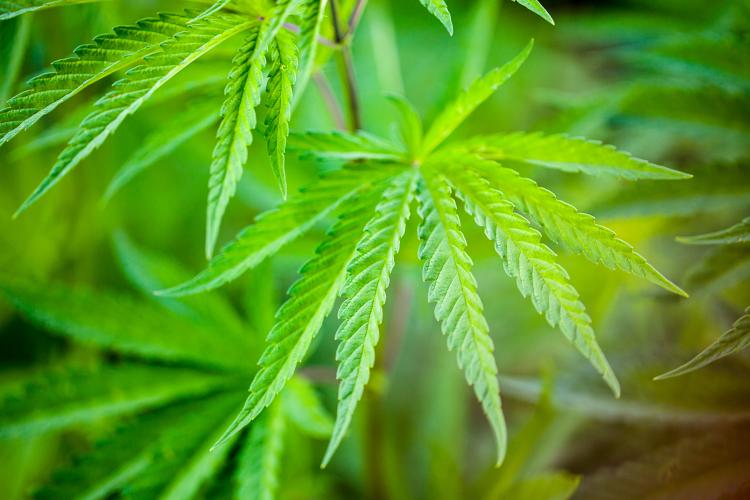



MPF: US Hemp Feed Coalition driving use of hemp as animal feed
Since the federal legalization of hemp in 2018, many segments of the agriculture industry have been taking advantage of the new opportunities within this market.
© Matt Barton, University of Kentucky Agricultural Communications student
“Large scale hemp production will create inexpensive byproducts that are valuable as animal feed ingredients. Hemp seed meal provides high values of nutrition, such as complete protein, omega-3 and omega-6 fatty acids,” said Andrew Bish, vice president of the Hemp Feed Coalition, at the Midwest Poultry Federation conference held virtually in May.
To realize those benefits, the Hemp Feed Coalition has been working to gain federal approval for hemp and its byproducts as an animal feed ingredient.
Currently, animal feed regulation sits within a number of agencies & organizations:
- U.S. Food & Drug Administration (FDA)
- USDA Agricultural Marketing Service
- State Departments of Agriculture
- Association of American Feed Control Officials (AAFCO); non-regulatory, providing model regulations & publishing feed ingredient definitions & terms
As of now, hemp products aren’t currently approved by the AAFCO or the FDA Center for Veterinary Medicine. If this situation were to change, it could open even more markets and opportunities within the animal sector.
Here are some of the steps that, according to Bish, the Hemp Feed Coalition is taking in 2021 to create a more hemp-friendly business and regulatory environment:
Keeping up with a rapidly growing hemp market
According to Bish, the seed and grain segment of industrial hemp is expected to grow 19.8% annually between 2020 and 2027. The animal care segment is expected to grow 9.7% during that same time frame, with 190 million tons of animal feed produced each year.
As of now, that would require 30 million tons of hemp seed to be produced in the US. When you consider that the average planted hemp seed acre yields 800 to 1,200 pounds of seed, the market will need to see 30,000 acres of planted hemp to reach that number.
Given that the USDA-AMS projects hemp product sales to grow from $2.5 billion in 2020 to $17 billion in 2025, this presents crop growers with a potential new cash crop that can further enhance farmers’ income in this booming crop economy.
The benefits of hemp as an animal feed product
A typical hemp seed cake is derived from multiple varieties of hemp. But regardless of the specific variety, hemp feed provides animals with immense nutritional value.
For example, one type of hemp cake contains 33.5% protein, 34% fiber and 10% fat. Of the fiber, 34.6% is acid detergent, and 43% is neutral detergent fiber (NDF). Additionally, hemp cakes are rich with omega-3 and omega-6 acids, as well as oleic acid, saturated fatty acids, and even gamma linoleic acid, which is not seen in most other oil seeds.
Due to its nutrient-rich composition, in 2020 the Hemp Feed Coalition submitted the first application to AAFCO for a hemp by-product to be recognized as an animal feed ingredient. The submission specifically was for hemp seed cake and meal to be fed to egg-laying hens.
Hemp Feed Coalition’s research partner, the Winger Group, reported positive findings, no safety concerns, and overall improvements in the eggs, and in some cases, improvements in shell thickness, yolk color & fatty acid composition. The anticipated response from FDA will be in the summer of 2021.
Unfolding research on the effects of hemp on animal health
Hemp Feed Coalition works directly with universities & private research organizations nationwide to monitor and promote hemp studies and research.
Here are some of the types of studies that are underway right now, looking into the various applications and potential effects of hemp on animal health; especially in animals used for slaughter:
- Colorado State University is studying hemp seed meal for lambs
- Tarleton University is studying in vitro digestibility of hemp seed meal using ruminant fluid
- Tuskegee University is studying hemp seed meal for goats
- North Carolina State University is studying hemp seed oil for horses
- North Dakota State University is studying hemp seed meal for beef cattle
- Kansas State University is working with ruminant researchers on cannabinoid transference in the meat, milk and eggs of hemp-fed animal byproducts
- Oregon State University is doing a feed trial using extracted pulp material on different species
Future projects include adding small ruminants to meal cake approval, completing the application for hemp seed oil and completing clinical field trials for horses, adding broiler chickens to meal cake approval applications, initiating the application for pulp for beef cattle, conducting further research into cannabinoids and more feed trials.
Landmark legislation for hemp
Additionally, Bish reported that new legislation in Montana is exciting news for the hemp industry. The landmark bill, HB 396, signed into law by Governor Greg Gianforte, authorizes hemp food ingredients as commercial animal feed.
Key to the legislation’s passage were Ken and Morgan Elliott of IND Hemp in Montana, representing 30+ family farms raising hemp. They coordinated with hemp lobby firm AGHS.
Other features of the new law include:
- Clarifying that hemp seed food ingredients and substances derived from hemp are included in the definition of commercial feed
- Providing authority for hemp use as commercial feed for pets, specialty pets and horses (this does not apply to additional livestock as FDA approval is required)
Hemp Feed Coalition’s ambitious initiatives for 2021
When it comes to moving the market in a new direction, Hemp Feed Coalition isn’t sitting on the sidelines. They have seven bold initiatives they hope to accomplish just in 2021:
- Submit at least one new ingredient definition application for the AAFCO and FDA approval
- Present a quarterly webinar, or other outreach or educational activity
- Contact and engage organizations to introduce their work and develop relationships for outreach and engagement
- Identify potential funding champions, grant or fundraising opportunities
- Increase membership by 20%
- Identify potential nutritionist partners
- Create an overview of state by state legislation & regulations for animal feed
If the Hemp Feed Coalition is able to achieve each of these objectives in 2021, it would be a major move toward a more hemp-friendly agriculture market.










